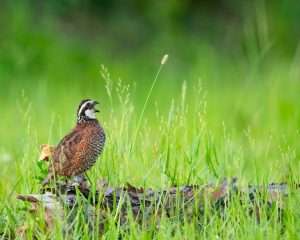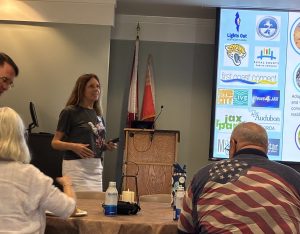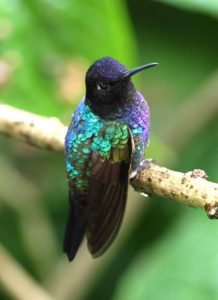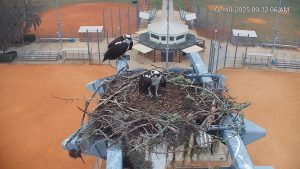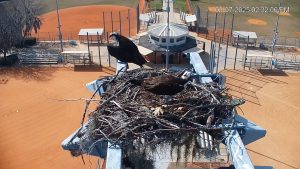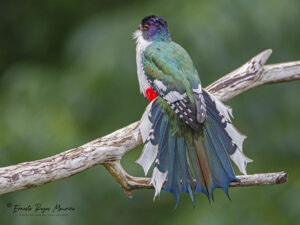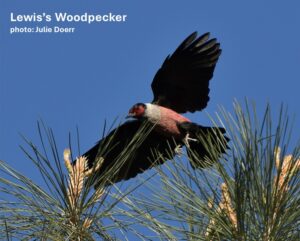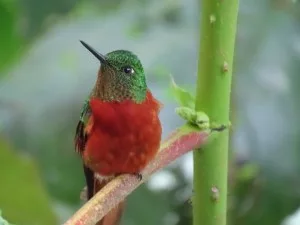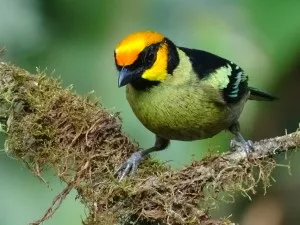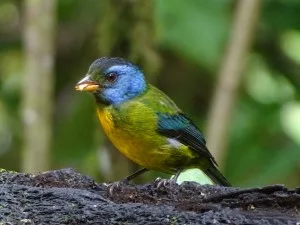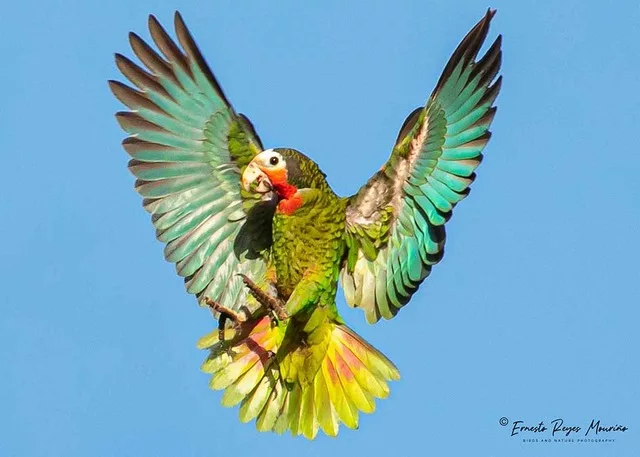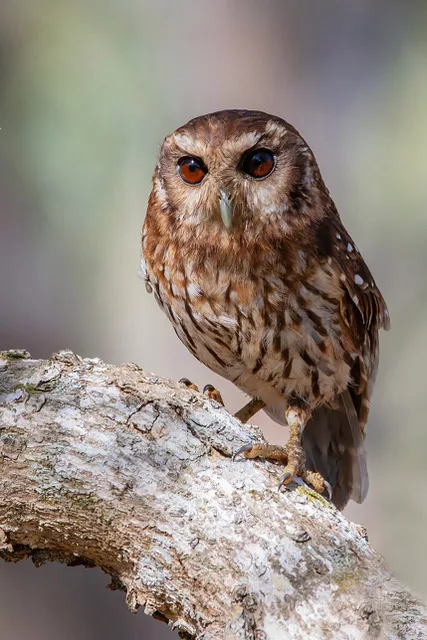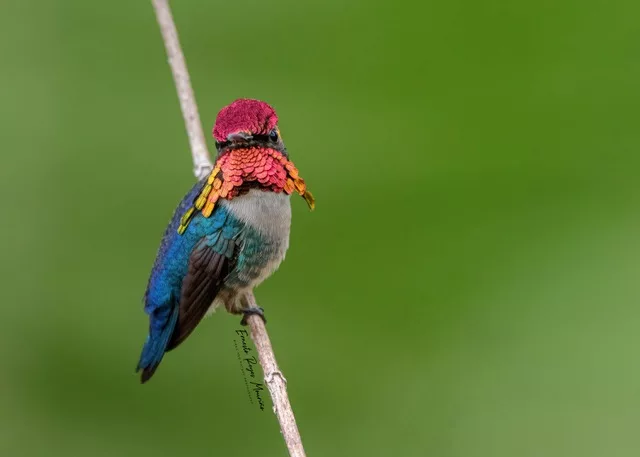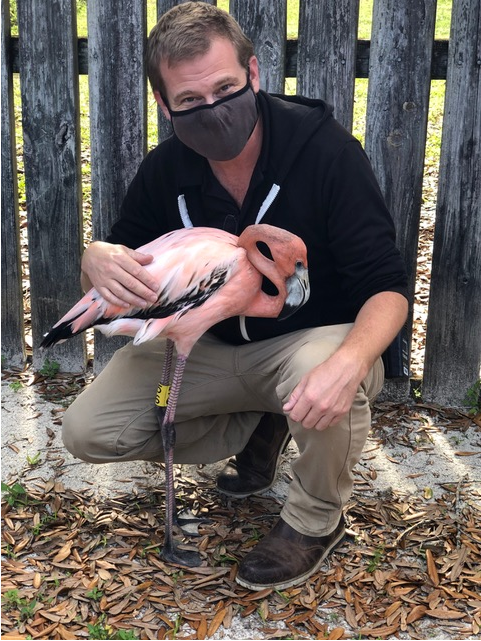All AAS Evening Programs are free and open to the general public.
During the pandemic, many of our past programs were presented via Zoom and were recorded and posted on our YouTube channel. See respective program descriptions below with links to our YouTube channel.
Upcoming Programs
Does the song remain the same? Birdsong patterns across Florida’s latitudinal gradient with Mitch Walters
Thursday, October 23, 6:45 – 8:15 pm
Cypress and Grove Brewing
Cypress and Grove Brewing, 1001 NW 4th St, Gainesville
Whether you’re a feisty Carolina Wren warbling in a forest patch or a mighty Sandhill Crane calling across a wetland prairie, acoustic communication is critical to every bird’s survival and reproduction. To succeed, bird species must develop ways to effectively transmit their signals to receivers while reducing acoustic competition. Mitch Walters’ PhD research at the University of Florida explored several hypotheses for song evolution in birds and examined how human disturbance affects vocal communication in bird communities across the Sunshine State.
Past Programs
Love your Birds – Where Science and Conservation meet Art with Elizabeth Filippelli
Thursday, September 18, 6:45 – 8:15 pm
Cypress and Grove Brewing
Cypress and Grove Brewing, 1001 NW 4th St, Gainesville
Engage in a lively science-based program with Elizabeth Filippelli of the Duval Audubon Society. She is currently serving as Co-Lead of the Northeast Florida Lights Out Program. Elizabeth will present a program on what you can do to save our migrating birds and our local bird population. Learn about the perils of artificial light pollution and how reflective glass is impacting our migrating birds. It’s a little bit of science, conservation and art. Learn what you can do to support Light’s Out and take action at your own home. Elizabeth’s work with Lights Out North Florida (LONF) focuses on building partnerships with City of Jacksonville leaders, Jacksonville Jaguars and major businesses in Downtown Jacksonville to spread awareness of the perils to birds of artificial light pollution and reflective glass and how to fix it. Recent successes include the very first Lights Out North Florida Proclamation encouraging homeowner and businesses to turn off their non-essential lights at night and Jacksonville Jaguars joining the program by turning off Daily’s Place lights at night from 11 pm – 6 am – everyday.
University of Florida Bird Observatory- a New Research and Education System with Charlie Muise
Thursday, August 21·6:45 – 8:15 pm
Cypress and Grove Brewing
Cypress and Grove Brewing, 1001 NW 4th St, Gainesville
Since 1992, Charlie Muise has banded over 40,000 birds of more than 100 species across the eastern U.S. This year, a group of researchers at the University of Florida hired him to kickstart the new University of Florida Bird Observatory (UFBO.) The goals of the observatory are to train graduate and undergraduate students, assist with permitting and logistics of various projects, conduct public outreach and education, and collect samples for multiple investigators, all while conducting statistically valid research into bird populations. Charlie will give an update on the first few months of this endeavor, including current and continuing projects, as well as some future possibilities. He will explain how it fits into current research and outreach programs and talk about the need for volunteers and support from local birders.
From Torrent Tyrannulets, Emeralds, Sapphires, and Woodnymphs, to Conjuring the Elusive Antpitta – Birding the Cloud Forests of Ecuador with Austin Gregg
View a PDF of this presentation here.
Thursday, June 26, 6:45 – 8:15 pm
Cypress and Grove Brewing
Cypress and Grove Brewing, 1001 NW 4th St, Gainesville
Join Alachua Audubon for an evening with Austin Gregg, as he recounts a memorable journey to this small South American country that hosts an incredible 1600 species of birds. Along with seven other adventuresome birders, a driver, and a local guide, we crisscross the equator visiting numerous private nature reserves and a number of public parks. Over the course of 10 days, travelling first to the western cordillera then to the eastern, 296 species of birds were observed at altitudes ranging from 1,873 to 13,300 feet. The Quito megalopolis, countryside, culture, and
natural beauty of Ecuador made for a most notable trip.
The Ups and Downs of Setting up an Osprey Camera on UF’s Campus with Mark Hostetler
Thursday, May 22·6:45 – 8:15 pm at Cypress and Grove Brewing
Cypress and Grove Brewing, 1001 NW 4th St, Gainesville
So you have seen the online wildlife webcams … How easy (or hard) is it to install and maintain? Professor Mark Hostetler will talk about the ups and downs of installing such a camera and maintaining it. Currently, there is a camera installed on an osprey nest on the University of Florida campus (see https://wec.ifas.ufl.edu/extension/ospreycam/). This camera has existed (on and off) since 2017 (with financial support from Alachua Audubon.) Viewers log on from around the world to see how this pair of ospreys raise their chicks. It is nature, so lots of drama and cute moments. Dr. Hostetler will talk about the ospreys and the (sometimes) hilarious, behind–the–scenes experiences of maintaining a wildlife webcam.
Mark Hostetler is a professor and Extension specialist with the UF/IFAS Department of Wildlife Ecology and Conservation.
What Do Migrating Birds Need When They Pass Through Florida? with Scott Robinson
Thursday, April 24·6:45 – 8:15 pm at Cypress and Grove Brewing
Cypress and Grove Brewing, 1001 NW 4th St, Gainesville
Thanks to the uses of modern technology and community science, we now know a great deal about large-scale patterns of bird migration. Yet, we still know little about what migrants need at more local scales and in the entire Florida peninsula even though large proportions of the populations of many species pass through here, especially in the Fall. Scott will review some of the recent results from large-scale studies and then talk about research being conducted here in Florida designed to improve resource availability for birds during migratory stopovers.
Scott Robinson is the Katharine Ordway Professor of Ecosystem Conservation at the University of Florida. He studies the ecology, behavior, and conservation of birds. His laboratory uses the approaches and theoretical insights of basic ecology and behavior to study questions of conservation significance in various ecosystems in North America and in the tropics.
Sweetwater Wetlands Park – A Triple Crown Winner for Birds, Birders, and the Environment!! with Debbie Segal
Thursday, March 20th, 2025, 6:45 – 8:15 pm, at Cypress and Grove Brewing
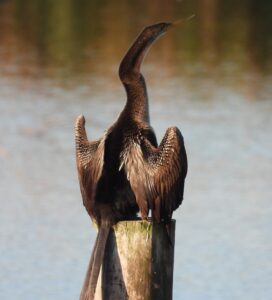
The ecological, recreational, and ecotourism benefits of GRU’s Sweetwater Wetlands Park are wide-ranging and represent a triple crown winner for water quality, wildlife, and visitors. Because of Sweetwater’s many community-wide benefits, GRU has decided to construct a second treatment wetland, one that will be located on the west side of Gainesville and will be designed to recharge the Floridan Aquifer with cleaner water. Join Debbie Segal for this informative presentation and learn how Sweetwater Wetlands Park and other constructed treatment wetlands successfully and inconspicuously clean water bodies, and about GRU’s plans for a new system – the Groundwater Recharge Wetland.
Debbie Segal is a retired environmental scientist who worked in the field of wetlands ecology, soil science, and environmental permitting for over 25 years. While working with Wetland Solutions, Inc., she helped design and permit Sweetwater Wetlands Park. She serves on the quarterly Sweetwater stakeholder committee and leads a monthly bird walk at Sweetwater. Debbie is also president of the Alachua Audubon Society.
Birding From the Caribbean to Central and South America
Thursday, February 13th, 2025, 6:45 – 8:15 pm at Cypress and Grove Brewing
Ernesto Reyes Mouriño will talk about the value of Cuba as a biodiversity hotspot in the Caribbean, the National System of Protected Areas including the areas nominated by UNESCO as Biosphere Reserves, and the threats for most of our Cuban birds with focus on those that are under some of the UICN categories (CR, EN, TH, LR) especially Cuban endemic birds. He also will talk about the positive impacts of the birdwatching in Cuba and include a short history from the past to the present and his experiences contributing to work with ornithologist and local groups to do social science (eBird for example) and the impacts in the knowledge about Cuban birds. His talk will be illustrated by photos of Cuban birds, as well as a selection from Colombia and Brazil.
(photo: Cuban trogon)
How Important Are Caterpillars for Birds? Critical! with Deborah Green
Friday, January 31st, 2025, 6:45-8:15 pm, at Cypress and Grove Brewing
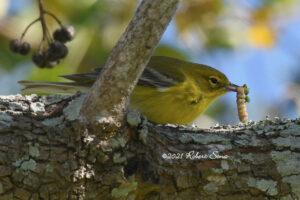
Most birders and native plant gardeners know about berries sustaining songbirds in winter and in migration, but the importance of insects to the lives of songbirds seems to be a little obscure. One group of insects, the small caterpillars known as microlepidoptera, are the most valuable players. How they tie in to warbler migration to our wonderful deciduous forests of the Eastern United States is an amazing story that Deborah Green loves to share, invoking the work of Scott Weidensaul and Dr. Doug Tallamy. How the timing of migration ties in with the leafing out the forests illustrates the complexity of our natural world. Deborah will share her suggestions of how we can help, from not using pesticides to growing specific native plants for these caterpillars.
Deborah earned her Ph.D. in entomology from University of California, Berkeley, nearly 45 years ago with a community ecology study involving caterpillars. At that time, she was a member of the California Native Plant Society and, moving back to her home state of Florida, she joined the Florida Native Plant Society in the late 1980s. Deborah is working to make her home landscape in Central Florida 100% native and has the pleasure of seeing some great songbirds in her own yard. She is a big fan of Dr. Doug Tallamy, who promotes the importance of insects as the “little things that run the world,” and she simplifies Tallamy’s message for us locally here in Florida, emphasizing the caterpillar connection. Deborah grew up in Gainesville, and although she has lived for the past 40 years in the Orlando area, she still has family here and has shown up at Alachua Audubon events over the years. Deborah is president of Orange Audubon Society and chairs the NORTH SHORE BIRDING FESTIVAL which is the first weekend in December.
Changing Bird Names with Andy Kratter
Thursday, January 9th, 2025, 6:45 – 8:15 pm at Cypress and Grove Brewing,
For 130 years, the American Ornithological Society (AOS) has determined the official names, both scientific and English, for North America’s bird species. The AOS announced this fall that it is embarking on a process to change the common names of birds that are named after people.
Birds with eponymous names can be found in every section of a field guide, from the Bullock’s Oriole to the Ross’s Goose and Wilson’s Plover. Among sparrows alone, 11 different species are named after people.
The AOS changes will encompass approximately 152 North American birds and 111 South American birds.
Dr. Andy Kratter has been Collections Manager at the Florida Museum of Natural History in Gainesville for the past 27 years. For 25 of these years, he has also been a member of the North American Classification Committee, the arm of the AOS that has traditionally determined the taxonomy and nomenclature of North American birds. Andy will give a summary of the controversial proposal to change hundreds of bird names from his perspective on the front row of bird nomenclature.
Andy’s wide experience includes field work in Peru, Trinidad, New Guinea, the Solomon Islands, Guyana, Costa Rica, Bolivia, Nepal, New Zealand, Italy, Australia, and most of the U.S., particularly Florida, California and Louisiana. Each spring, he watches the loons crossing over Gainesville from the Gulf of Mexico to the Atlantic Ocean, and overseas the Loon Watch program.
eBird & Merlin: a “new” era of bird watching? with Adam Kent
Thursday, December 5, 2024, 6:45 pm – 8:15 pm at Cypress and Grove Brewing
This presentation will focus on eBird and will also briefly cover the Merlin Bird ID app. eBird is a Cornell Lab of Ornithology and National Audubon Society citizen science project that has revolutionized the way birders keep track of their sightings and accesses information about bird distribution. Merlin Bird ID is another amazing Cornell resource that is, in effect, a digital field guide covering the entire world! Merlin does not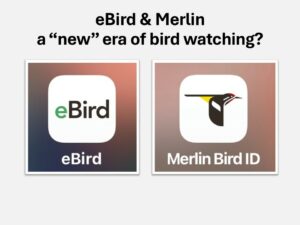 , as the name implies, identify birds, but instead gives you “suggestions” for a bird’s identification based on sounds, photos, or descriptions. Often these suggestions are accurate, but sometimes they are incorrect. Both eBird and Merlin are incredibly useful tools that have changed the way much of the world goes bird watching. During this presentation, we’ll explore how to navigate eBird and how to get the most out of Merlin. For example, we’ll learn how to use eBird to find birding hotspots, help plan a trip, look for specific bird species. and collect accurate data.
, as the name implies, identify birds, but instead gives you “suggestions” for a bird’s identification based on sounds, photos, or descriptions. Often these suggestions are accurate, but sometimes they are incorrect. Both eBird and Merlin are incredibly useful tools that have changed the way much of the world goes bird watching. During this presentation, we’ll explore how to navigate eBird and how to get the most out of Merlin. For example, we’ll learn how to use eBird to find birding hotspots, help plan a trip, look for specific bird species. and collect accurate data.
Birding and More at Dry Tortugas National Park with Mitch Walters –
Thursday, November 14, 2024, 6:45 pm – 8:15 pm at Cypress and Grove Brewing
Seabirds, warblers, a Civil W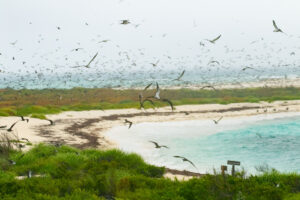 ar fort, tropical fish, and choppy seas. These are just a few of the many incredible things I encountered during my camping trip to the beautiful and isolated Dry Tortugas National Park last April. Ever since I moved to Florida from southern California to start graduate school, I’ve always wanted to visit Dry Tortugas, but didn’t know a whole lot about it. What is there to do on the island? What birds can I see and when should I visit? Through photography, I will show you my experience and help you design the perfect trip to this mysterious national park in the middle of the Atlantic!
ar fort, tropical fish, and choppy seas. These are just a few of the many incredible things I encountered during my camping trip to the beautiful and isolated Dry Tortugas National Park last April. Ever since I moved to Florida from southern California to start graduate school, I’ve always wanted to visit Dry Tortugas, but didn’t know a whole lot about it. What is there to do on the island? What birds can I see and when should I visit? Through photography, I will show you my experience and help you design the perfect trip to this mysterious national park in the middle of the Atlantic!
This will be an in-person presentation at Cypress and Grove Brewing, 1001 NW 4th St., Gainesville, from 6:45 pm – 8:15 pm.
Donations to cover room rental are optional but appreciated. Donate at https://alachuaaudubon.org/donate/ or there will be a donation jar at the event.
A Slice of India’s Amazing Biodiversity with Lloyd Davis and Somnath Datta
Lloyd 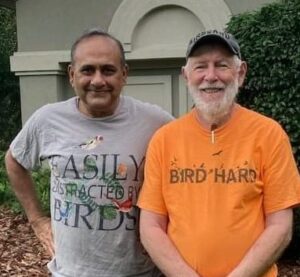 Davis and Somnath Datta will present a travelog of their trip to India. Lloyd will share some stories behind his great photos. You will see street scenes from Gujarat, Calcutta, Shiliguri, and Bangalore and meet people and wildlife witnessed in December 2022.
Davis and Somnath Datta will present a travelog of their trip to India. Lloyd will share some stories behind his great photos. You will see street scenes from Gujarat, Calcutta, Shiliguri, and Bangalore and meet people and wildlife witnessed in December 2022.
This will be an in-person presentation at Cypress and Grove Brewing, 1001 NW 4th St., Gainesville, from 6:45 pm – 8:15 pm.
Donations to cover room rental are optional but greatly appreciated. Donate at alachuaaudubon.org/join/ or there will be a donation jar at the event.
Tips for Tricky Flycatchers
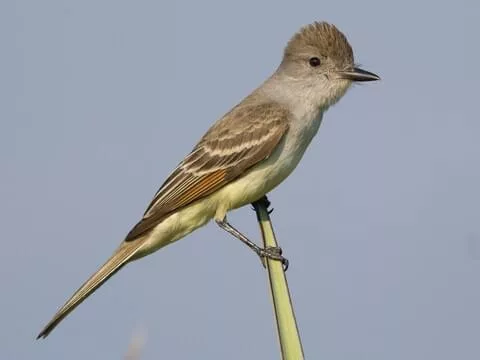
Event Rescheduled:
February 22nd at 7 PM
https://us06web.zoom.us/j/86327319419
Join us as we talk about one of the most tricky groups of birds for birders: flycatchers! Renowned bird guide and flycatcher expert Chris Benesh from Field Guides Birding Tours will be joining us to present on some of Alachua County’s rare flycatcher visitors and how they compare to some of our more common species. We will discuss flycatcher ecology in general and how best to identify some of the trickier flycatcher species.
Birds of Ecuador’s Chocó-Andes and Amazon
April 4, 2024
Zoom Link: https://us06web.zoom.us/j/84958610671
Based in Gainesville, Holbrook Travel is celebrating 50 years of educational travel, providing a true connection between our travelers, nature and people of countries across Latin America, Africa, and destinations beyond.
Join Holbrook Travel birding specialists Debbie Jordan and Jill Hays for a presentation on the incredible birds of Ecuador’s Chocó-Andes and Amazon. Learn about the Amazon, cloud forest, rainforest, páramo, and the eastern and western slopes of the Andes Mountains as they share a photographic journey of some of the country’s 1,640-plus bird species.
Debbie Jordan’s 31-year career with Holbrook Travel began in 1986 with company founder Giovanna Holbrook. Debbie rejoined Holbrook in 1996, and her passion for birding and nature travel has led her to organize hundreds of group expeditions that directly support habitat conservation in Central and South America. Now working part-time, she enjoys the duties of Holbrook Ambassador.
Jill Hays joined Holbrook Travel in 2023. A favorite travel memory was her first trip to Costa Rica in 2012, visiting Selva Verde and seeing Trogons and Toucans for the first time. Later she began leading international birding trips through Holbrook. Her great joy is sharing the love of birding and nature and helping others realize their travel dreams.
On the trail of a wetland wanderer: what we have learned from tracking white ibises across the Southeastern United States
February 8th at 7 PM
https://us06web.zoom.us/j/86410776269
The white ibis (Eudocimus albus) is a colony nesting bird that uses widely ranging and sometimes nomadic movements to locate unpredictable food sources in the Southeastern United States. These behaviors make it difficult to understand broad patterns of the white ibis’s movement across multiple annual cycles. However, this information would help us understand how white ibis breeding populations are structured, and what regions may be most important to ibises throughout their annual cycle.
To better understand white ibis movement patterns, we set out to determine three questions: Where do ibises travel after breeding or fledging in coastal Alabama? 2.) How do different regional sites, or “nodes”, contribute to overall connectivity within spatial networks of ibises? 3.) What can movement networks tell us about the spatial structure of breeding white ibis populations in coastal Alabama?
We tagged 40 adult and juvenile ibises with Argos transmitters and tracked them from 2020 to 2023. We used this tracking data to build spatial networks for these birds, so that we could better understand their movements across the southeast. Our findings give us a more complete understanding of the white ibis’s annual movements and can help inform conservation at multiple scales.
Research Bio: Chris Gulick is a PhD candidate at the University of Florida, studying the movements and demography of two wading bird species, the white ibis and the tricolored heron. He received his Bachelor’s degree from Texas Tech University, and his Master’s Degree at Kansas state University, where he studied the movements of lesser prairie-chickens in response to different landscape configurations and disturbance regimes. Chris’s research spans several different topics and species, but his primary focus is tracking movements of wildlife to inform conservation and management.
Photo credit: Atlee Hargis
Gainesville CBC Count Up via zoom
December 17, 5:30 pm
If you are unable to attend the annual Gainesville Christmas Bird Count Up in person, then join us via zoom! Join us as we count up the totals for every species across the CBC circle. This is a great way to see a snapshot of the birds in our area, and to understand the long-term trends of birds over time. This online meeting is for displaying only, however you will be able to communicate via chat with the host, Zach Holmes (evening programs coordinator), if you have questions, comments, or were a participant in the CBC and noticed an error. The meeting room will be opened at 6 PM, but may officially start late than this.
Birding Cuba!
December 8th at 7 PM
11/2023 Birding SE Arizona with Mitch Walters:
https://www.youtube.com/watch?v=4C9IuUrsWz4&t=5s
02/2023 Paynes Prairie State Park with Bubba Scales:
https://www.youtube.com/watch?v=yJPxreLyr2c
Thursday, May 11, 2023
History, current status, and possible futures for American Flamingos in Florida by Dr. Steven Whitfield.
Through the 19th century, large flocks of American Flamingos were noted by naturalists visiting South Florida. Yet by the start of the 20th century, the flamingos had disappeared, the victims of unregulated hunting for food and for the emerging plume trade. In the early 20th century, several wealthy industrialists imported flamingos into Florida to inhabit private ponds on their estates, and some birds escaped into natural areas. With wild flocks lost and escaped captive birds on the loose, ornithologists and wildlife biologists speculated through the 20th and 21st century about the origins of flamingos in Florida: Are they the last wild birds surviving in remote areas? Escaped individuals of just one more introduced species finding a home in Florida’s warm climate? Or are they birds from outside Florida reclaiming habitats where they once lived before hunting drove them extinct? Dr. Whitfield will clarify the history of the species in Florida, address cutting-edge science by Zoo Miami’s conservation team and partners to identify the origins of the birds, and highlight efforts to help this species recover in Florida’s natural areas.
Dr. Steven Whitfield is a conservation biologist at Zoo Miami, where he leads conservation research projects with rare and endangered species- including Gopher Tortoises in South Florida, amphibians in Central America, and American Flamingos in Florida. Since joining Zoo Miami’s conservation team in 2015, Dr. Whitfield has been working to build a scientific basis for the conservation and recovery of Florida’s iconic flamingos, more than a century after the last large flocks of wild birds were devastated by hunting in the late 1800s.
Dr. Whitfield holds a PhD and MS in biology from Florida International University and has more than 20 years of experience conducting conservation fieldwork in the United States, Latin America and the Caribbean.
March 9, 2023 at 7:00 PM on Zoom OR in person at the Community Foundation of North Central Florida, 3919 Newberry Road, Gainesville FL 32607. Doors open at 6:30.
How Climate Change Pushes Songbirds and Spring Out of Sync by Robert Guralnick, Professor and Curator at the UF Museum of Natural History.
New research shows climate change is altering the delicate seasonal clock that North American migratory songbirds rely on to successfully mate and raise healthy offspring, setting in motion a domino effect that could threaten the survival of many familiar backyard bird species.
Join the Zoom Meeting: https://us06web.zoom.us/j/84604473923
Meeting ID: 846 0447 3923
Or meet at the Community Foundation of North Central Florida, 3919 Newberry Road, Gainesville FL. Doors open at 6:30 – light refreshments will be served.
April 13, 2023 at 7:00 PM on Zoom or in person at the Community Foundation of North Central Florida, 3919 Newberry Road, Gainesville FL. Doors open at 6:30.
Plants for Birds by Jacqui Sulek, Audubon Florida
When you think about it, everything in the natural world is connected to something else. Yet the connections are not always obvious. Learn how important native plants are as the foundation for biodiversity and how your role as backyard gardener can make a difference. Jacqui Sulek has been a native plant gardener for over 25 years and will speak from her perspective about the impact that smart landscape choices can make.
Or meet at the Community Foundation of North Central Florida, 3919 Newberry Road, Gainesville FL. Doors open at 6:30 – light refreshments will be served.
North Florida Sparrows: Identification and Ecology, Saturday, Jan 14, 2023 at 7:00 PM on Zoom


Join Adam Kent as he shows us how to identify sparrows found in North Florida. Once you understand the basics of the combination of distribution, behavior, and appearance for this fascinating group of birds, you can begin to chip away at the term “little brown job” and get more out of your sparrowing experience.
An Anhinga sparked Adam’s passion for birds when he was a child. Since then, an enthusiasm for the natural world has led him to a variety of biologist positions including assessing sites for the Great Florida Birding Trail, working as Florida’s first Scrub-Jay Conservation Coordinator, and currently as a biological consultant and natural history tour leader. One of Adam’s birding highlights was making recordings that led to the description of a new species of bird in Mexico, the Nava’s Wren. Adam has been leading sparrow identification workshops since 2000.
View the recorded program on our YouTube channel here:
Link: https://www.youtube.com/watch?v=DrDdUCXq6JI
Understanding Paynes Prairie Preserve State Park: A Dive Into Managing For Wildlife on the Prairie, Tuesday, February 7th, at 7 pm on Zoom


Presenters Bubba Scales and Brian Law
Paynes Prairie Preserve State Park is a regional treasure among nature enthusiasts, especially birders, and a major contributing factor to the community’s sense of place. Meet Brian Law, the biologist who manages the park’s natural features and hear what he has to say about ongoing and upcoming efforts to preserve and restore the habitats that support the diversity of wildlife that birders and the community at large has come to know and love. Park volunteer, Friends of Paynes Prairie board member, and former owner of Wild Birds Unlimited, Bubba Scales will join Brian to highlight some of the most notable ornithological events occurring in the prairie over the past year or so. Join us we discuss the park like you have never heard about it before, the park that makes Gainesville so unique!
Join the Zoom Meeting Feb 7, 2023 07:00 PM Eastern Time
The Most Endangered Bird in North America: The Florida Grasshopper Sparrow, Thursday, Nov 17, 2022 07:00 PM on Zoom


Considered the most endangered bird in North America, the Florida Grasshopper Sparrow (Ammodramus savannarum floridanus) is a subspecies that has exhibited steep declines in their population for the last 30 years. This decline has long been attributed to the loss and fragmentation of their native habitat, Florida’s dry prairie. Efforts to bring them back from the brink of extinction has created perhaps one of the largest and most successful collaborations between federal agencies, state agencies, and non-profit organizations. Novel management tools were created by the state to maximize Florida Grasshopper Sparrows’ reproductive success and, along with the establishment of a captive-breeding population, biologists are now seeing hope for the future of Florida Grasshopper Sparrows.

Fabiola “Fabby” Baeza-Tarin was born in the border town of Ojinaga, Chihuahua Mexico. I received my Bachelor’s degree in Biology and Master’s degree in Range and Wildlife Management from Sul Ross State University in Alpine, Texas. For my master’s thesis, I worked under Borderlands Research Institute to investigate overwinter habitat requirements of two grassland bird specialists that have experienced steep population declines, Baird’s Sparrow and Grasshopper Sparrow on a ranch in Marfa, Texas. My fondness of grassland birds, and more specifically, the Grasshopper Sparrow brought me to Archbold Biological Station. I am a Research Assistant in the Avian Ecology Program overseeing a population of the critically endangered Florida Grasshopper Sparrow, a subspecies that resides in Florida year-round. I lead the research and manage the population of sparrows at DeLuca Preserve, a working cattle ranch. At this property, I am investigating management options that would enhance and protect avian biodiversity of cattle ranches while keeping cattle operations profitable, ultimately to export the gained knowledge to other Florida ranches. I am a subject-matter expert and spokesperson for the state-wide effort to protect and connect a network of 18 million acres of critical habitats in the state of Florida, the Florida Wildlife Corridor, to ensure the state’s ecology, economy and well-being of all Floridians for generations to come.
Join the Zoom Meeting at https://us06web.zoom.us/j/81562475681
or find the link on our website under Events ->Evening Programs.
Meeting ID: 815 6247 5681
Biography of Frank Chapman – The Man who Created the Christmas Bird Count
Presented by James Huffstodt with an introduction by Rex Rowan.
Thursday, December 8, 2022 at 7PM on Zoom.

Join us as James Huffstodt presents the enigmatic history of Frank M. Chapman, the creator of the Christmas Bird Count and a past resident of Gainesville, from his recently published book “The Man Who Loved Birds”. Dr. Frank M. Chapman worked at the American Museum of Natural History in New York City, and made his mark as the most popular bird writer of his era, internationally renowned ornithologist (despite never having gone to college), South American explorer, museum innovator, perfector of the bird habitat diorama, pioneer bird photographer (circa 1890), and one of the leaders in bringing an end to the bloody reign of the plume hunters. Beginning in 1885 the New Jersey resident spent winters at his mother’s cottage in Gainesville until her death in 1912. During that time, he did extensive and important bird research at Alachua Sink and the surrounding area, now a part of Paynes Prairie Preserve State Park.

James Huffstodt, 75, is a retired Florida Fish and Wildlife Commission information-education officer and lives in Tallahassee.
View the recorded program on our YouTube channel here:
Link: https://youtu.be/PeEjQ3yIiMQ
Gainesville’s Treatment Wetlands: Sweetwater Wetlands Park and the Planned Groundwater Recharge Wetland by AAS President Debbie Segal.

The ecological, recreational, and ecotourism benefits of GRU’s Sweetwater Wetlands Park are wide-ranging and represent a triple crown winner for water quality, wildlife, and visitors. Because of Sweetwater’s many community-wide benefits, GRU has decided to construct a second treatment wetland, one that will be located on the west side of Gainesville and will be designed to recharge the Floridan Aquifer with cleaner water.

Join Debbie for this informative presentation and learn how Sweetwater Wetlands Park and other constructed treatment wetlands successfully and inconspicuously clean water bodies, and about GRU’s plans for a new system – the Groundwater Recharge Wetland.
View the recorded program on our YouTube channel here:
Link: https://www.youtube.com/watch?v=1jCffT1789c

Bird Photography Basics by Mitch Walters, Thursday, August 25, 2002 at 7:00 p.m. on Zoom

Why Make Nest Boxes for Kestrels?, Thursday, August 18th at 7:00 p.m. on Zoom

Invaders, Vagrants, & Rarities, Thursday, June 23rd, 2022 at 7:00 p.m. on Zoom
This program was presented by Alex Lamoreaux, a senior leader and North American birding specialist
for Wildside Nature Tours. Alex guides birding tours across the US and beyond. He has worked on avian
research projects from the Arctic National Wildlife Refuge to southern Belize. Bird migration, particularly
shorebird and raptor migration, is his strongest interest. You might recognize Alex’s name from when he
has visited or lived for short periods of time in the Gainesville area, but he currently resides in Plymouth,
Massachusetts and bird-guiding takes him all over the world. His presentation will delve into the mechanisms that influence how birds end up where they shouldn’t be by drawing on rare bird sightings from Florida and beyond.

View the recorded program on our YouTube channel here:
Link: https://www.youtube.com/
Panhandle Birding by Robert Gundy, Thursday, May 19, 2022 at 7:00 p.m. on Zoom
Robert Gundy will profile eastern Florida panhandle birding hotspots. Robert, who prefers to be called simply Gundy, has lived for many years in the Tallahassee area and birded the area extensively. He has many recommended birding hot spots for you to explore and we are guessing that you are not aware of many of these great locations,
In 2020, Robert and his girlfriend Natasza Fontaine worked together to break the Florida Big Year record, which had been set at 387 species just the year before. Birding as a team, Natasza ended the year with 386 species and Gundy with 388.
If you watched Robert and Natasza’s program on their wild adventures chasing birds for their big year you know how entertaining they can be. This was a fun program too!

An Introduction into Fireflies, their Diversity, Natural History, Life Cycle
April 4, 2022
Dr. Oliver Keller earned his PhD from the University of Florida where he studied fireflies of the West Indies. The West Indies are a biodiversity hotspot home to almost 10% of the world’s firefly species. Currently, he is working as a biological scientist in the Florida State Collection of Arthropods (Florida Department of Agriculture and Consumer Services) continuing his research on fireflies.
His presentation includes an introduction into fireflies, their diversity, natural history, and life cycle. He will then cover the firefly diversity of Florida, where to find them, the consequences of light pollution, and tips and tricks to help preserve their habitat.
Email and twitter accounts – okeller1977@gmail.com and @dr_firefly
Here is the video recording of this program, uploaded to our YouTube channel.
The Biggest Day— the World Record Big Day of 1982 in Amazonian Peru (23 March, 2021)
Scott Robinson is the Ordway Professor at the Florida Museum of Natural History and also taught at the university of Illinois after getting his Batchelor’s Degree at Dartmouth and his doctorate at Princeton. He teaches Avian Biology at UF and has been a fanatical birdwatcher since his father introduced him to the hobby in 1967. He took a gap year in college to set a new North American Big Year record in 1976. His lab mostly studies birds in South America, but also has projects in Africa and China.
Back in the late 1970s and 1980s, before there were any field guides or other easily available sources of information, ornithologists made pioneering visits to remote sites in the Amazon and Andes where they obtained the first recordings of bird songs, described many new species, and characterized the structure of these hyper-diverse tropical bird communities. This list included John Terborgh, John Fitzpatrick, and the late Ted Parker. When I began my doctoral research on the birds of the Amazon, I was fortunate enough to be taught bird songs by these pioneers and to collaborate with Ted Parker on a research project censusing, for the first time, an Amazonian bird community in 1982. This talk describes how we took advantage of this new knowledge to establish a world record Big Day—331 species—on foot and by dugout canoe in an area of about a square mile, a record that endured until just a few years ago.
Here is the video recording of this live program, uploaded to our YouTube channel.
Monitoring Terns in Maine (11 January 2022)
My name is Brian Cammarano: avid birder, avian conservationist and University of Central Florida graduate with a degree in Ecology, Evolutionary & Conservation Biology. I have been working seasonal jobs to experience firsthand what it takes to be a field biologist. I have been involved with many avian conservation efforts such as Songbird banding in Key Biscayne for the Cape Florida Banding Station, grassland songbird nest searching in Eastern Montana, black rail detection surveying in Big Cypress and monitoring beach nesting birds in Southwest Florida.
Last summer (Summer 2021), I was a Project Puffin Research Assistant on Stratton Island, off the coast of Maine, where I conducted research and monitored a tern colony including the federally listed Roseate Tern. Join me for this presentation where I will provide some insight on what it’s like to work and live on a colonial seabird nesting island!
Here is the video recording of this live program, uploaded to our YouTube channel.
A Chemist’s View of Birds in Costa Rica (7 December 2021)
Join us for a visual treat! William J. Cooper, Professor Emeritus, University of California, Irvine and now living in Florida will share his photographic treats with us. His videos were all taken at the Pierella Ecological Garden, Horquetas de Sarapiqui. This garden was the vision of William Camacho. Mr. Camacho started raising blue morpho butterflies in a 20 meter by 20 meter enclosure in 1995 and by selling them through the Costa Rica Entomological Supply he was able to buy more land for the present 3 hectares (7.5 acres) garden. The biodiversity of birds there is spectacular and provides a unique opportunity to study several species such as the White-tailed Manakin and the White-necked Jacobin Hummingbird.
Here is the video recording of this program, uploaded to our YouTube channel.
Winter Hummingbirds with Fred Bassett (3 November 2021)
Perhaps you were able to see our spring program on hummingbirds with Fred Bassett. Now we will view a talk given by Fred that is specifically designed to help you coax some western hummingbirds to your feeder this winter. You will hear specific hints on this process and see some outstanding photos of these migrating western hummingbirds.
We follow up Fred’s talk with additional presentation and commentary from Bubba Scales, who shares valuable information and insights with a more local focus on Gainesville/Alachua County.
Here is the video recording of this program, uploaded to our YouTube channel.
Bees of the long-leaf pine ecosystem (06 October 2021)
Robert Gundy and Natasza Fontaine share the adventures of their Florida Big Year
(25 September 2021)
Have you ever done a Big Day? A Big Year? In this presentation, Robert Gundy and Natasza Fontaine shared the adventures of their 2020 Florida Big Year. Some of you may have followed their postings as they drove around Florida searching to add as many species to their list as they could. Their entertaining talk covered highs and lows, wet nights and dry days and plenty of mileage on their vehicles. Final count: Robert 388 species, Natasza 386 species. Lots of fascinating stories in this one!
Here is the video recording of this program, uploaded to our YouTube channel.
Changes in Attitude: Latitudinal shifts in social roles within avian mobs of North America (4 August 2021)

Featuring Dr. Katie Sieving of the UF Dept. of Wildlife Ecology & Conservation and director of the AAS Bird Banding Lab. She talked about winter mobbing flocks – mainly how titmice, nuthatches, chickadees and downy woodpeckers vary in mob participation between FL, TN, and IN. Here in FL, titmice rule the mobs but as we move north they take a back seat to nuthatches. These core mobbing and flocking species have complicated relationships but they are commonly together and their togetherness benefits them (and other species, too)! We will explore these relationships beyond mobbing flocks too.
(We will add the recording of this program shortly)
Two Weeks in Thailand (13 July 2021)

Scott will share stories and photos of birds and wildlife from his adventure in Thailand in early 2020. Join him for photos of dozens of bird species including: Bulbuls, Hornbills, Sunbirds, Treepies, and Laughingthrushes. He will also include many mammals and a handful of herps.Many of you attended our standing-room only program when Scott shared his birding trip to India. We’re sure you will enjoy this talk too!
(We will add the recording of this program shortly)
Springs and Aquifer Protection is for the Birds (29 June 2021)
Join us to hear and see Dr. Bob Knight, Director of the Howard T. Odum Florida Springs Institute, describe the worsening threats to Florida’s artesian springs and the Floridan Aquifer that springs rely on, and how one approach to protecting the springs also enhances birdlife. Prior to founding the Florida Springs Institute, Bob was President of Wetland Solutions, an environmental engineering firm specializing in design and implementation of constructed treatment wetlands. In addition to working on more than 200 treatment wetland projects nationwide, Bob started and ended his wetlands career conceptualizing and helping to design Gainesville’s Sweetwater Wetlands. This project not only cleanses nitrogen from about 2 billion gallons of the City’s wastewater and stormwater that enters the aquifer each year at Alachua Sink, but it also is home to one of the most diverse and productive birding hotspots in North Florida. Bob will describe how other large utilities throughout the state’s 27 million acre Springs Region can play their part in protecting the most important drinking water supply in Florida while enhancing their environmental stewardship.
(We will add the recording of this program shortly)
Alaska: Birding the Last Frontier with Andy Bankert (14 May 2021)
Hummingbirds! (12 April 2021)
This month we will focus on one of the area’s most popular birds, the hummingbird. Fred Bassett is known in this area as he frequently comes here to band hummingbirds from his base in Alabama. We asked Fred to give us a zoom talk and he replied that he has many requests and thus has created a recorded presentation that he hopes we will use. And we will! After viewing Fred’s 30 minute talk we will have a panel of local bird enthusiasts who have a long history of contact with Fred and extensive knowledge of hummingbirds to field questions and tell of experiences with Fred. We hope you will join us on zoom. Just click on the link below.
(We will add the recording of this program shortly)
Breaking New Ground with Florida Scrub-Jay Translocations (16 March 2021)
Dr. Karl Miller of FWC’s Fish and Wildlife Research Institute will share the latest findings from his translocation research on Florida Scrub-Jays. Karl and his team are translocating jays from Ocala National Forest to conservation lands in north and south Florida to achieve multiple objectives. New techniques, used at different times of the year, are proving beneficial for the safe and effective translocation of this threatened species.
Zoom failed to record the full program but what we have of it (including the excellent Q&A portion) will be coming soon.
Conservation Ecology of Short-tailed Hawks, Swallow-tailed Kites, and Snail Kites (15 February 2021)
Here is the video recording of this live program, uploaded to our YouTube channel.
The 2020 Christmas Bird Count In Alachua County, a Synopsis (21 January 2020)
Bird Bling (3 Dec 2020)
Building Better Birding Skills by Adam Kent (9 Nov 2020)
Do you know how to identify individual Downy Woodpeckers based on their head patterns; how to identify a Tricolored Heron based on bill length; or how to tell an American Crow from a Fish Crow when it is calling, even if you can’t hear it? Adam will answer these questions and more in this presentation geared toward birding in your neighborhood.
Here is a list of books mentioned in the program:
By Kenn Kaufman: Kaufman Field Guide to Advanced Birding: Understanding What You See and Hear (2011)
By Donald Kroodsma: The Singing Life of Birds (2005), Birdsong by the Seasons (2009), and Birdsong for the Curious Naturalist, (2020)
By Nathan Pieplow: Peterson Field Guide to Bird Sounds of Eastern North America (2017)
By David Sibley: Sibley’s Birding Basics (2002), The Sibley Guide to Bird Life and Behavior (2001), and What It’s Like to Be a Bird (2020)
And here is a link to the eBird Alachua County Bird Observations bar chart:
Here is the video recording of this live program, uploaded to our YouTube channel.
Program: A New Wetland in Gainesville! (4 Nov 2020)
Gainesville Regional Utilities and their partners, the Florida Department of Environmental Protection and Suwanee River Water Management District, plan to create a groundwater recharge wetland park near Diamond Sports Park (western Alachua County). The wetland park will create valuable wildlife habitat and recreational opportunities while simultaneously replenishing the Floridan Aquifer, which will help support flows at the Santa Fe River and its springs. During the presentation Kristen Sealey, GRU Engineer and Rick Hutton, GRU Supervising Engineer, will provide background about the project and share the multiple benefits the park will bring to the community and environment.
Here is the video recording of this live program, uploaded to our YouTube channel.
A Fight Against Time (8 Oct 2020)
Nordmann’s Greenshank is one of the most endangered shorebirds on our planet. Join UF grad student Philipp Maleko as he tells of his adventures in Eastern Russia working with Russian ornithologists wading through bog and forest to study this rare animal.
Here is the video recording of this live program, uploaded to our YouTube channel.
Urban Mockingbird Song Diversity
Wednesday, January 15, 2020, Millhopper Library, 6:30 p.m., (social time 6:00 p.m.)
The Northern Mockingbird is our Florida State Bird and Floridians love hearing its rich repertoire of calls and songs. A U of FL researcher is studying this bird right here in our Northwest Gainesville neighborhoods! Is there more song diversity in urban or rural Mockingbirds? What has been learned?
Saving Wildlife – Serving Community:
Tuesday, February 18, 2020, Millhopper Library, 6:30 p.m. (social time 6:00 p.m.)
Injured, orphaned, displaced wildlife are only part of our mission. Equally important are human interactions and conservation efforts.
Note: This talk precedes an Alachua Audubon field trip to look for birds on
the grounds of Sunrise Wildlife Rehabilitation in High Springs the following
Saturday, February 22. Public welcome.
